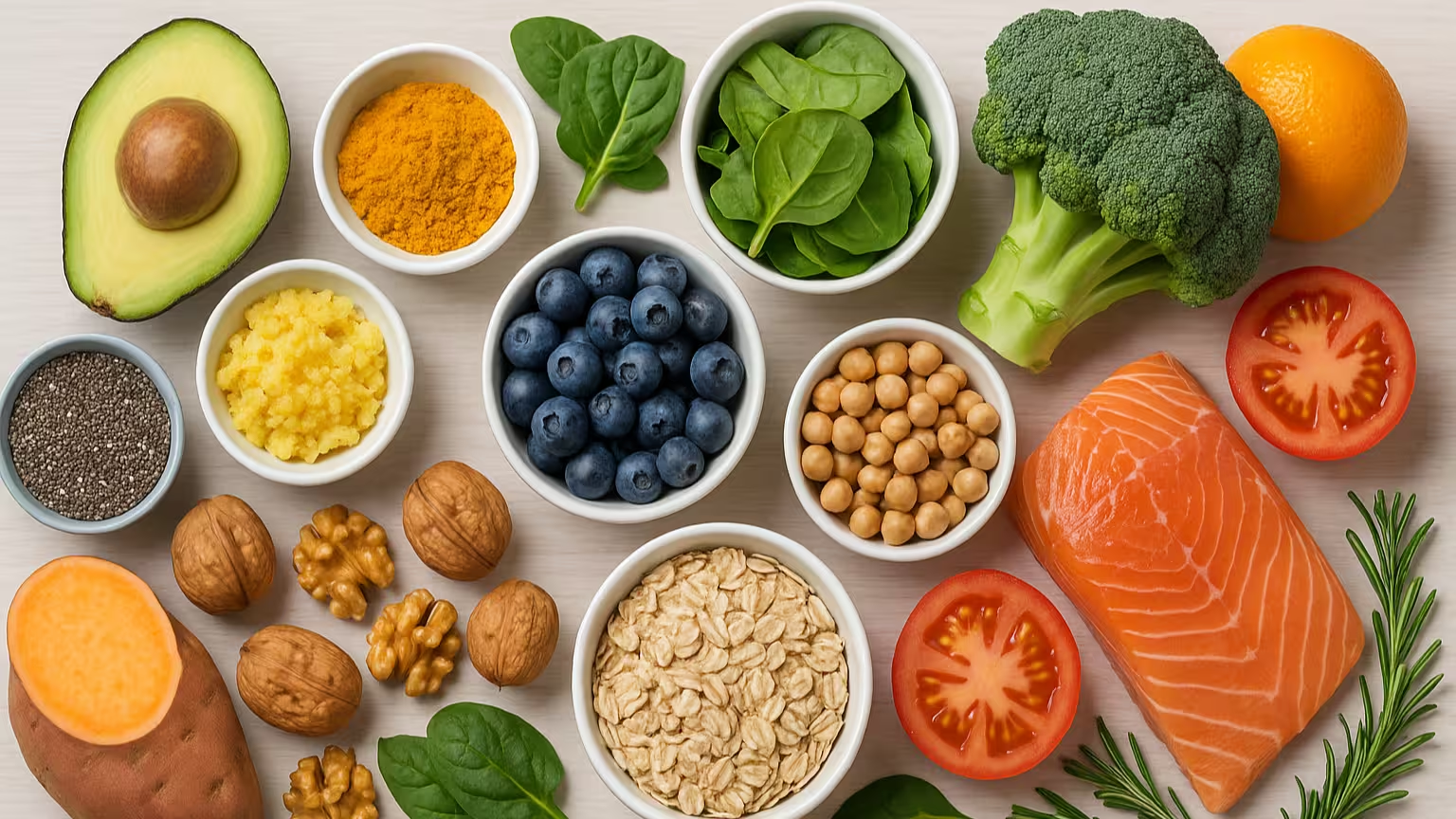Inflammation is a natural part of the body’s healing process. It’s how your immune system defends you against injury, infection, and toxins. But when inflammation becomes chronic—sticking around long after the threat is gone—it can silently fuel a host of health issues like heart disease, diabetes, arthritis, obesity, and even some cancers.
One of the most effective ways to fight chronic inflammation? Through your plate. What you eat every day can either calm or aggravate your body’s inflammatory response. In this guide, we’ll explore what an anti-inflammatory diet looks like, which foods to prioritize, and which ones to avoid.
Table of contents
Why Focus on an Anti-Inflammatory Diet?
The anti-inflammatory diet isn’t about cutting calories or following strict rules. It’s a lifestyle that emphasizes whole, nutrient-rich foods that nourish your body and minimize inflammatory triggers.
People who follow anti-inflammatory eating patterns often report:
- More energy
- Better digestion
- Less joint pain
- Clearer skin
- Improved mood and focus
And long-term, it may help reduce your risk for chronic disease.
What to Eat: Anti-Inflammatory Foods
Let’s start with the good stuff. Here’s what you should aim to eat more of:
1. Colorful Fruits and Vegetables
These are packed with antioxidants, vitamins, and fiber that help reduce inflammation.
- Best picks: Berries, oranges, spinach, kale, broccoli, sweet potatoes, tomatoes
- Why: Antioxidants like vitamin C and flavonoids neutralize free radicals
2. Healthy Fats
Not all fats are created equal. Focus on omega-3 fatty acids and monounsaturated fats.
- Best picks: Avocados, olive oil, nuts (especially walnuts), chia seeds, flaxseeds, and fatty fish like salmon, sardines, and mackerel
- Why: Omega-3s are known to directly reduce inflammation markers
3. Whole Grains
Refined grains can cause blood sugar spikes, but whole grains are full of fiber and nutrients.
- Best picks: Brown rice, quinoa, oats, barley, whole wheat
- Why: Fiber supports gut health, which plays a huge role in regulating inflammation
4. Plant-Based Proteins
Legumes and beans are great sources of protein and fiber.
- Best picks: Lentils, chickpeas, black beans, tofu, tempeh
- Why: They’re low in fat and packed with nutrients that help reduce inflammation
5. Spices and Herbs
Add flavor—and anti-inflammatory power—to your meals.
- Best picks: Turmeric, ginger, cinnamon, garlic, rosemary
- Why: These natural compounds act like mini-medicines in your body
6. Green Tea
Green tea contains EGCG, a potent anti-inflammatory antioxidant.
- Why: Drinking green tea regularly may lower your risk of several chronic illnesses
What to Avoid: Inflammatory Foods
These foods can trigger or worsen chronic inflammation. While it’s okay to indulge occasionally, limiting these items can make a big difference in how you feel.
1. Refined Carbs and Sugars
- Foods: White bread, pastries, sugary cereals, sodas, candy
- Why: Spikes blood sugar and triggers inflammation pathways
2. Processed and Fried Foods
- Foods: Chips, fast food, frozen meals, microwave popcorn
- Why: Often high in trans fats and refined oils that promote inflammation
3. Red and Processed Meats
- Foods: Bacon, sausage, hot dogs, deli meats, and too much beef or pork
- Why: These are linked to increased levels of CRP (C-reactive protein), a key inflammation marker
4. Excess Alcohol
- Why: Too much alcohol disrupts gut bacteria and can increase inflammation in the liver and body
5. Artificial Ingredients
- Ingredients: MSG, aspartame, preservatives, and food colorings
- Why: These can cause immune system reactions in sensitive individuals
Sample Day of Anti-Inflammatory Eating
Breakfast:
Oatmeal topped with blueberries, chia seeds, and a drizzle of almond butter
Lunch:
Quinoa bowl with roasted vegetables, chickpeas, olive oil, and tahini dressing
Snack:
Handful of walnuts and green tea
Dinner:
Grilled salmon with steamed broccoli and sweet potato mash, spiced with turmeric and garlic
Dessert:
Fresh berries with a square of dark chocolate (70%+ cocoa)
Tips to Get Started
- Shop the perimeter of the grocery store where fresh foods live
- Cook more meals at home using whole ingredients
- Read food labels to avoid added sugars and inflammatory oils
- Hydrate well—drink plenty of water throughout the day
- Listen to your body—if a food makes you feel bloated or sluggish, take note
An anti-inflammatory diet isn’t a fad—it’s a sustainable approach to better health that can reduce symptoms and lower your risk for chronic illness. The beauty is in its simplicity: eat real, whole foods and minimize processed junk. Your body will thank you with more energy, better digestion, and a stronger immune system.
Start small. Add one anti-inflammatory meal a day. Build from there. You don’t need perfection—just progress.





